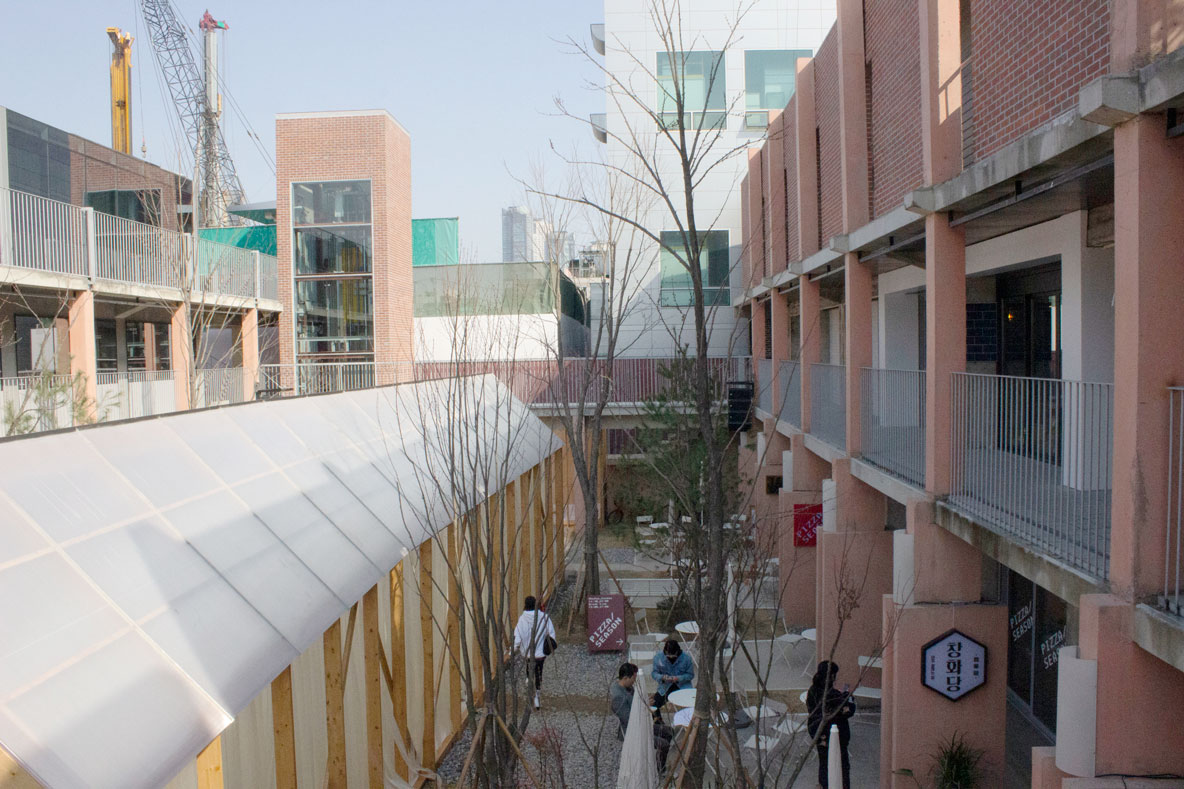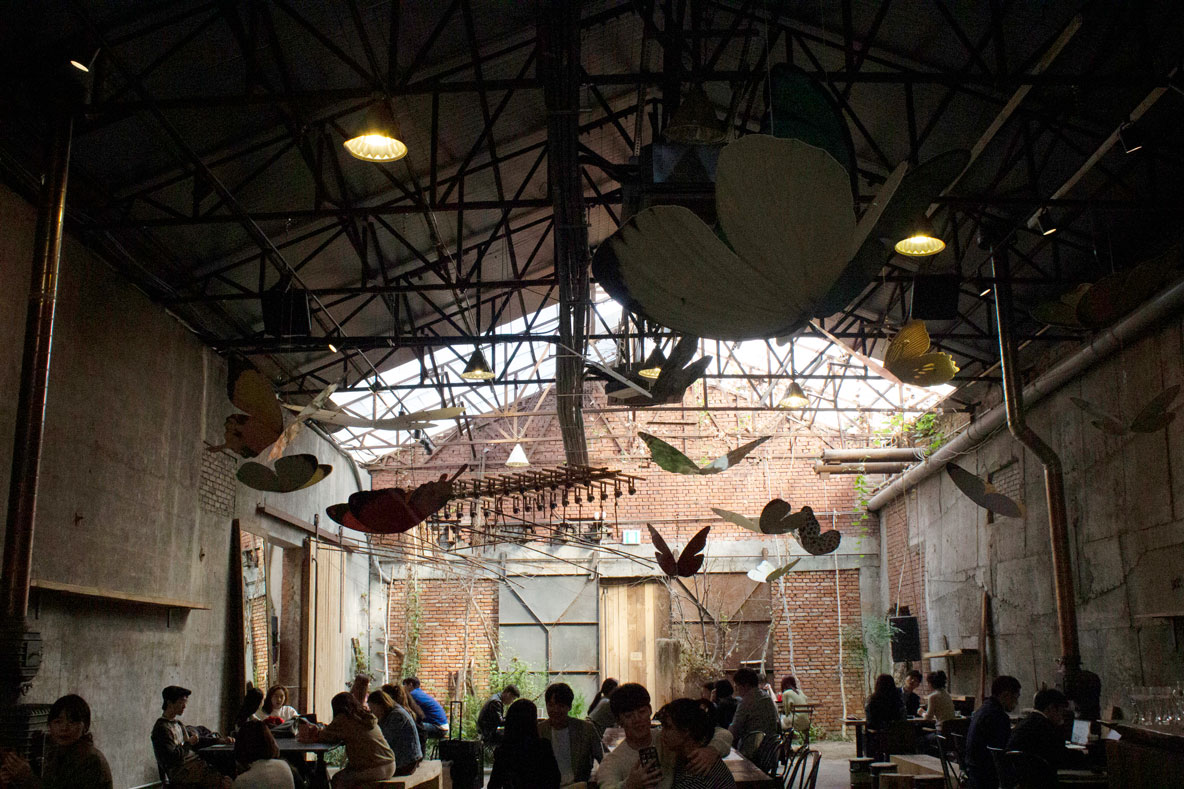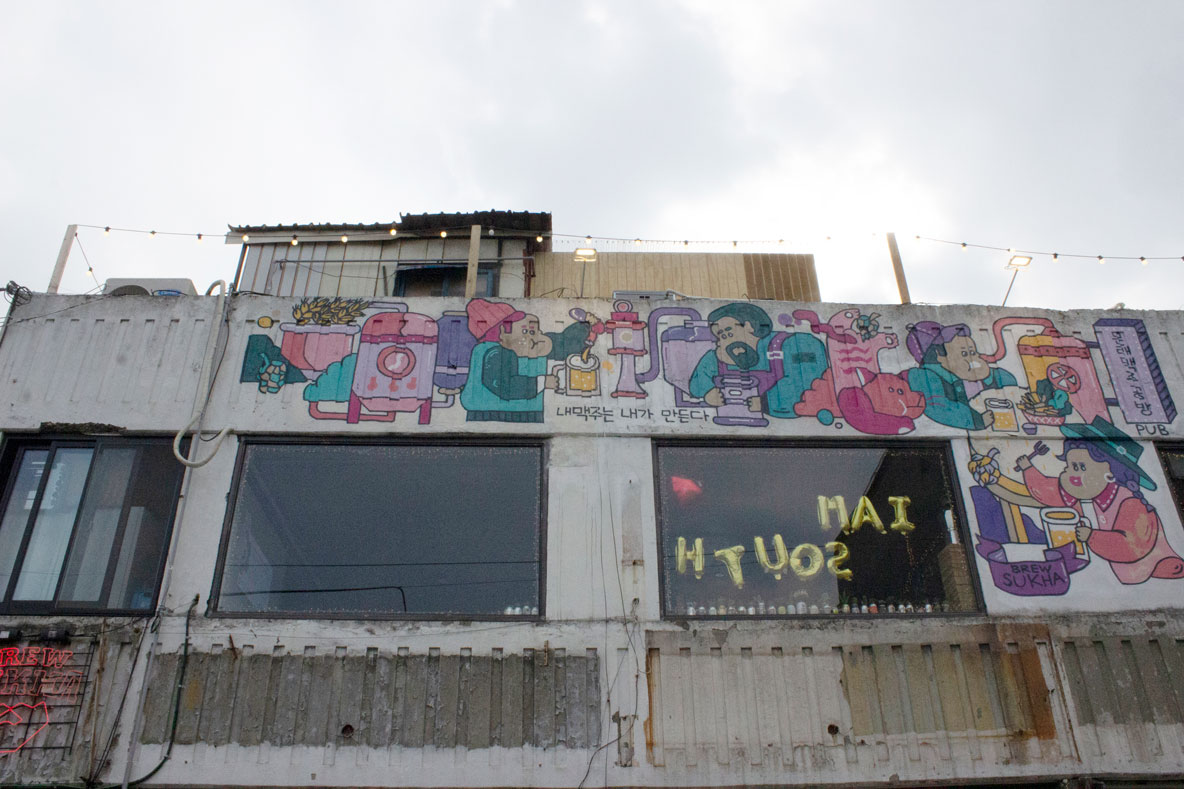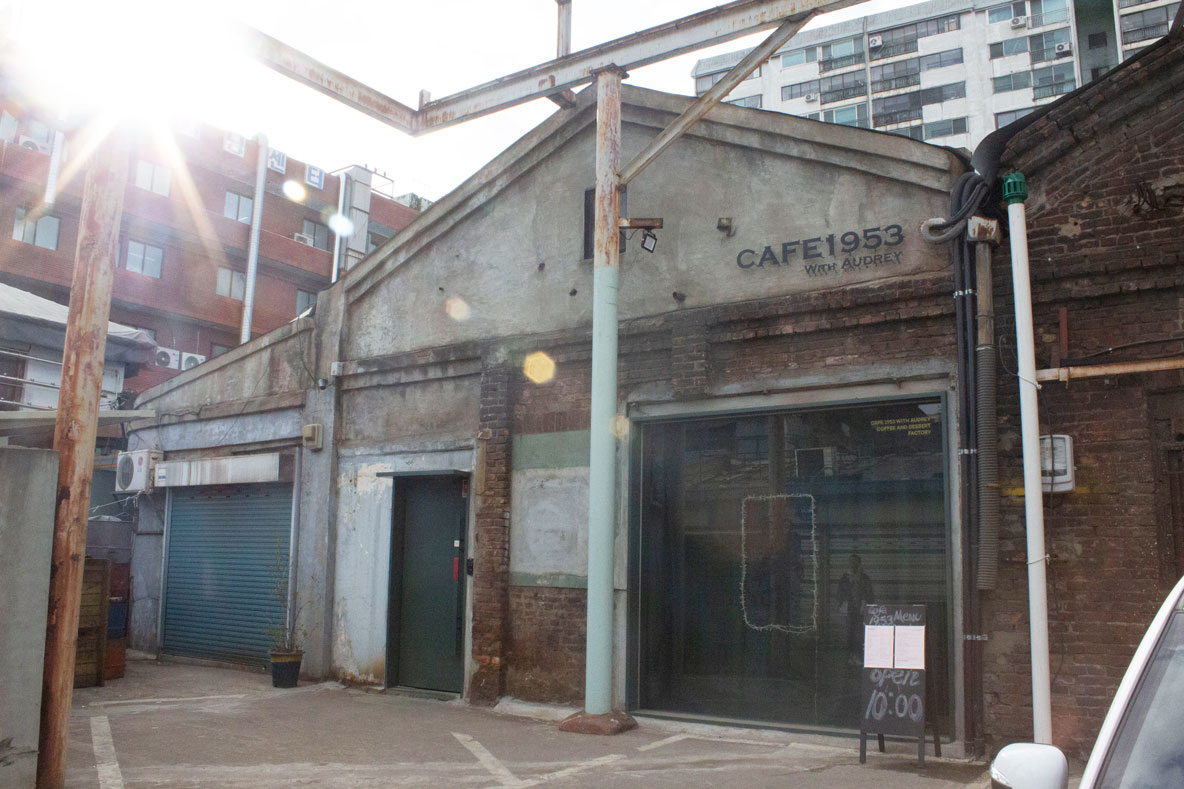- [Trending Now] Creating Young Culture in Old Factories of Seoul, Korea May 07, 2019
-
Introducing hybrid culture from the derelict in Seongsu-dong and Mullae-dong's hip art, food, and cultural spots
Student Reporter Lee Chae-wan (chaewan1212@yonsei.ac.kr)
A defining characteristic of the culture of the younger generation is hybridity, evident from a multicultural and hyperconnected society, mass media, multilingualism, and the multiple identities that the young are continuously exposed to. Under the influence of younger generations, hybrid cultures are born, mixing the old and the young, leisure and work, and art and industry.
More specifically, many young entrepreneurs are using abandoned factories as a locus for this new culture, attracting youth to a run-down neighborhood by setting up cafés, galleries and more. Seongsu and Mullae Districts are examples of such places; originally old industrial areas, devoid of liveliness of the youth, they are now the rising “hot places” where culture is brought to the derelict.
Seongsu-dong, a hub of abandoned factories
At Exit 3 of Seongsu Station, a divided view of the modern and the old greets me. Skyscrapers stand majestically on one side of the road, while on the path in front of me, factories still run with mechanics working away inside. After venturing into the seemingly labyrinth-like cluster of factories, Seongsu Yeon-bang appears in front of me.
Seongsu Yeon-bang
Since the 1960s Seongsu-dong was known as a heavy industrial area where small to mid-sized factories were cluttered together to manufacture their products. Over time, many factories closed down. Son Chang-hyeon, the CEO of OTD Corporation, bought one of these factories ten years ago to use it as his private office*. He then decided to turn it into a multicomplex of culture to create a “place where people gather around and enjoy their time.”
 Seongsu Yeon-bang
Seongsu Yeon-bangInitially a shoe factory, Seongsu Yeon-bang was reborn as a place for people to spend their leisure time. Seongsu Yeon-bang’s most defining characteristic is an enormous house-shaped art installation filing the empty courtyard of the factory grounds. Surrounding the artwork are a large living shop named Thingool Store, several restaurants, and a pastel mint-colored bookstore. The bookstore, named ARC N BOOK, displays relatively less well-known books and independent books. Seats are provided in between shelves, allowing me to be carried away with a book, freed from the attention of others. The entire third floor is refashioned into a café named Cheon Sang Ga Ok, literally meaning a heaven house. Just as the name suggests, it is a comfortable place with transparent glass walls and dim lighting, welcoming numerous customers with drinks and baked goods. From living goods to books and sweets, Seongsu Yeon-bang is a place of entertainment in the middle of the barren factory area.
*JoongAng Il-bo
Daerim Chang-go
Just a few steps away from Seongsu Yeon-bang, I encounter Daerim Chang-go by chance. Chang-go being a Korean word referring to a storage place, the place appears to be an ancient warehouse. Opening the heavy wooden door reluctantly, I’m surprised to find a living paradise. There is a big metallic kinetic art installation dividing the space inside; on the left is a gallery displaying more artworks and on the right is a workshop full of tools and a mechanic at work. Going deeper into Daerim Chang-go, I discover thick concrete walls and an exposed ceiling, obvious signs of the site having been an old warehouse.
 Inside of Daerim Chang-go
Inside of Daerim Chang-goHowever, it is clear that the warehouse has been rejuvenated with the touch of young artists. Sculptures of butterflies and dragonflies hang down from the exposed ceiling. In the back, there is an artificial garden of trees and flowers. What fills the center of the space are wooden tables where people are busily talking while enjoying either a meal or coffee and desserts. Many young artists are using this place to display their creativity; exhibitions and fashion launching shows take place here frequently, including the Chanel Collection that had taken place last March. Though the outside appears derelict, the inside serves as a venue for the young to share their artistic vision and refashioned culture.
Mullae-dong, old mechanic shops under new light
On the next day, I cross the Han River to visit Mullae-dong. The district has been renowned for its ironworks ever since the 1960s when storage-sized ironworks factories from Cheonggyecheon moved to this area. However, nowadays many young people are paying a visit to this town because young entrepreneurs have settled here to open quirky yet trendy restaurants, bars and handicraft workshops.
 A unique pub in Mullae-dong
A unique pub in Mullae-dongThe region is largely divided into two, the two sides facing each other across a big road. On one hand is the Mullae Handicraft Village—this is the original mechanic area where medium-sized factories are located. Unlike what the name implies, the area is still mainly occupied by running factories. However, young entrepreneurs and artists have immersed themselves in this area, making use of abandoned factories or corners of buildings to set up bas, handicraft shops or exhibitions. Young visitors to the village with fancy cameras, passionately taking photos, catch my eyes—the village, with its vintage storefronts and narrow winding streets covered in graffiti, is now a popular photo spot for aspiring photographers. Deep into the village, I unexpectedly encounter models who are posing for a fashion magazine. This is the scene where the young are bringing new meanings to old relics of the past.
Walking across the street I discover rows of old, small mechanic shops. This area is a maze, but if you look closely, you can find newly opened restaurants, bars, and workshops tucked in between the worn-out streets. While using the original space as it was, worn with time and small and confined, the new shops bring a breath of fresh air to the old village with their own contributions; graffiti decorations on the wall, unique sign boards and menus, and eye-catching statues. Looking for the hidden new shops in the winding maze of streets, I feel like I’m on an adventure.
Café 1953 with Audrey
After a satisfactory late lunch at one of the restaurants, I walk a little more towards Café 1953 with Audrey. At the outskirts of the village, there are three small factories that are connected to each other—while two of them are factories still running, one is where Café 1953 with Audrey resides. Despite the stark empty atmosphere outside, the inside of the café is totally different. The name may give you a hint; the owner, a huge fan of Audrey Hepburn, decided to use the café as a tribute to the actress. Posters of Hepburn are attached on almost every wall. At the back of the café, a small museum displays the owner’s proud collection—lines of figures of Hepburn, books and magazines dedicated to her, clothes she wore and a television only showing her movies.
 Cafe 1953 with Audrey
Cafe 1953 with AudreyThe overall atmosphere of the café is carefully curated to suit the iconic actress of Hollywood’s Golden Age, portraying an elegant, classic Hollywood vibe. While the previous shops I visited also tried to bring cultural elements that are new and young to the village, this café feels different. It merges museum elements with a lively café atmosphere, an elegant brew of the past and present, appreciation and conversation. In the hands of the café’s owner, Hepburn is alive again in one of the three factories. Meanwhile, the other two are still busy running to this day.
* * * * * * * * * * * * *
Some may criticize that the young do not have a culture of their own which can be distinguished from that of older generations. However, the fact that they are newly interpreting old spaces that could have been wasted with the passage of time and bringing a fresh burst of creativity to them seems to hint at a birth of a hybrid culture. Once abandoned as a relic of the past, factories are now rejuvenating old villages and attracting numerous visitors.
[Editor's Note] This article was contributed by Yonsei University's student-led English monthly, The Yonsei Annals.
show mobile menu
mobile menu




![[Trending Now] Creating Young Culture in Old Factories of Seoul, Korea](/_attach/image/en_sc/2019/07/0d75b062a8bda3aed31a089b445dddf4.jpg)